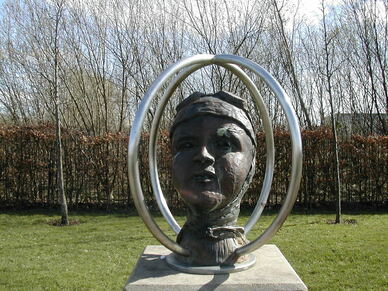|
Engineer of the Week No.31: Winifred Joyce "Winnie" Drinkwater (11th April 1913 - 6th October 1996) Today we remember Scottish aviator and engineer, Winnie Drinkwater on her 106th birthday. Scotswoman Winnie Drinkwater was a very well-known pilot and engineer in the 1930s. She was born in the rural village of Waterfoot to the south of Glasgow, her father was a mechanical engineer. Her father Albert was born in Italy with an Italian mother, and her mother Emma Banner, a district nurse, was the daughter of a Glasgow art teacher. In June 1930, at the earliest possible age of 17 she joined the Scottish Flying Club near Renfrew and over the next 2 years took part in Air Pageants and races, winning cups even before she was old enough to hold her full licence. On 8th May 1932, aged 19, she gained her pilots licence, her "B" (Commercial) licence on 14th May 1932, and her instructors licence later that year. This made her in quick succession the youngest pilot in the country and then the youngest ever UK commercial pilot. 1932 continued as an exciting year with various other public flying events including, in September, winning the Scottish Flying Club trophy for landing and in October,one of the Club's cups for air racing, winning by just 2 seconds over a course of 15 mile.  The following year she gained her ground engineer’s licence – although many women in this period gained their ordinary pilot’s licence, very few were commercial pilots and even fewer had their engineer’s licence too. This was the year, 1933, in which she was employed by John Cuthill Sword, the owner of Midland and Scottish Air Ferries as a commercial pilot. She made her first scheduled flight from Renfrew Aerodrome to Campbeltown on 27 April 1933 in a de Havilland Fox Moth bi-plane. Later she flew scheduled flights from Glasgow to London in a de Havilland Dragon. She did routine work like delivering newspapers, taxi work for private passengers and a more exciting job in which a newspaper chartered her plane to fly over Loch Ness at the height of the public frenzy to find the monster, Nessie. Sadly nothing was seen, but the jaunt made the newspapers anyway. There were more air displays in both Scotland and Ireland and one day whilst she was in her oily overalls, doing maintenance on an engine at Renfrew aerodrome she met her future husband, Francis Short, the director of Short Brothers aeroplane manufacturers. In 1934 she continued with her work, often flying what were then long distances within the UK, on one occasion being the inaugurating flight into a new airport – Speke at Liverpool. Winnie and Frank married in Dumfries on 19 July 1934 and the wedding was in numerous newspapers nationally. Although she rarely flew after having her two children,she was registered with the Flying section of the Women’s Legion, a forerunner of the Air Transport Auxiliary. It is unlikely that she would have done any war service, having two small children. Frank Short died in 1954 and she remarried later, to an inshore fisherman who also predeceased her. There is a commemorative sculpture of Winnie in a new municipal park – Clyde View Park – in Renfrew just to the west of Glasgow. The inscription reads “In 1930 Winnie Drinkwater became one of Scotland's youngest private aircraft pilots. She developed her passion as an aviatrix & aeronautical engineer with the Midland and Scottland Air Ferries Company. The panel depicts her ready to crank the propeller of a three engined Airspeed Ferry which she piloted. Among her many achievements she won the Mobil Oil Cup in 1931 and the Guild of Air Pilot's Instructors Certificate. Shortly after completing her training she flew perhaps the first commercial day return service between Glasgow and London in 1934.”
1 Comment
Jo-Danah Munro
10/3/2023 01:05:39 am
Thank you for writing such a beautiful piece about my Great Granny. It isn't often that I see her recognised for her talent.
Reply
Leave a Reply. |
- Home
- Electric Dreams
- All Electric House, Bristol
- Top 100 Women
- Engineer of the Week
- The Women
- Timeline
- WES History
- EAW
- Teatowels For Sale
- 50 Women in Engineering
- Museum Trails
- Waterloo Bridge
- History Links
- Blue Plaques
- Virtual Blue Plaques
- Career and Inspiration Links
- Contact
- Outreach
- Photo Gallery
- Bluestockings and Ladders
